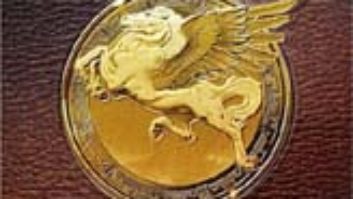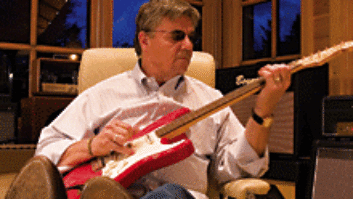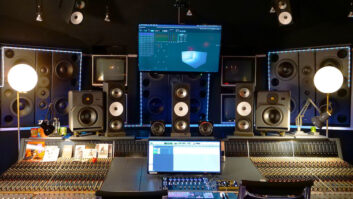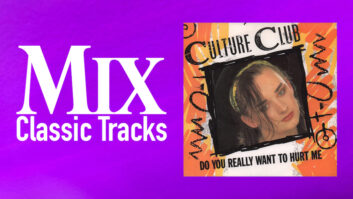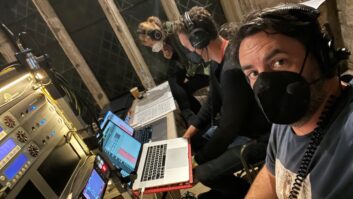By the time Steve Miller’s career exploded into mega-stardom in 1976 with his (still amazing) Fly Like an Eagle album, he’d been making records for 10 years and was already a semi-legendary figure, having recorded such FM radio staples as “Living in the USA” and “Space Cowboy” in the late ’60s.
Read more “Classic Tracks”
Buy the book
Miller was raised in Dallas, where his pathologist father — a serious music fan — managed to introduce his son to music legends like T-Bone Walker, Charles Mingus and even Les Paul, who offered a few guitar tips to young Miller and let him watch him work in the studio. During Miller’s teenage years, he was in a group that included Boz Scaggs; indeed, Scaggs would briefly be part of Miller’s group years later in San Francisco. In the interim, however, Miller went to college in the Midwest and in Denmark, then settled in Chicago, where he befriended the cats in the Butterfield Blues Band and others. In 1966, Miller moved to San Francisco and formed the Steve Miller Blues Band and started recording a string of fine albums, beginning with Children of the Future, cut in England with Glyn Johns. (He wisely dropped “Blues” from the name after that album; he always played much more than blues.) Though definitely part of the San Francisco scene of the late 1960s, Miller also always stood apart from the other bands — he derided the sloppiness of the first-generation psychedelic bands, and from the outset was more interested in album-craft than most of his S.F. peers.
In 1972, Miller was badly injured in an auto accident and then was felled by hepatitis, which effectively put him out of commission for almost a year. When he returned with The Joker in 1973, the title track landed him the first bona fide hit of his career — it made it all the way to Number One. It would take him another three years to put out an album, however, and that’s where we pick up the saga.
During his career resurgence after “The Joker,” Miller retreated to his Novato (Marin County) 8-track home studio and went to work, furiously writing new material and making demos. He cut a few basic tracks at CBS Studios in San Francisco, with CBS studio tech Mike Fusaro at the board, and he booked himself and his band into the historic Capitol Studios in Hollywood, where he’d recorded The Joker. That’s when engineer Jim Gaines, a Memphis studio veteran who had relocated to the Bay Area, got a phone call from Miller.
“I was actually working at Kaye Smith Studios in Seattle and he said, ‘Hey, would you consider working on my record?’” Gaines recalls recently from his Nashville-area home; he had just returned from a tour of Brazil with Santana. “We had never met before, but we’d talked. I’d helped coordinate some Tim Davis sessions — he was a drummer from Madison, [Wis.], where Steve went to school, and was part of the original [Steve Miller] band. Anyway, I was in the middle of a Spinners record, and I said, ‘Well, we ain’t gonna be done for two weeks.’ He didn’t like that answer. He complained to me that someone at Capitol had run a tour through the studio he was using in the middle of his session, so he said, ‘That’s it, I’m outta here!’ Plus, he didn’t want to deal with the union people down there. He didn’t think they really understood what he was trying to do. Two weeks later, he arrived in a van full of tapes, and we worked on a few things together.”
When I spoke with Gaines in the spring of 1987, he went into more detail: “We got into this incredible flow where we were mixing and re-overdubbing at the same time, working on the studio’s API console in one of Kaye Smith’s [Tom] Hidley — designed control rooms. We ended up working 17 days, 14 to 20 hours a day. We actually had two rooms going. I had my assistant doing some things in the other room while Steve and I worked on effects — things like the rising synth on ‘Fly Like an Eagle,’ which was a little Roland synthesizer that he didn’t know a damn thing about, but we played with it and this great stuff came out.
“What happened with me is he found someone who was really interested in his music. I’d say, ‘Let’s try this!’ and we’d just experiment. ‘How about this effect here?’ He was into that. He was totally open to it, and he just let me go. I was into delays and outing stuff on his voice, and echoes, and he just loved all of it. So though he was very demanding on a certain level — he’s a real perfectionist — he’s also into trying new things and looking for the perfect thing, which made it exciting for both of us.”
Gaines says that he and Miller both shared a love of Pink Floyd, “and that was definitely some of the inspiration for what we were doing with synthesizers and the transitions between songs, the crossfades and all that. We stole from the best,” he says with a laugh.
Fly Like an Eagle went through the roof, of course, with “Rock ‘N Me” hitting Number One, and both the title cut and “Take the Money and Run” also rising to the upper reaches of the charts. The sessions for that album had been so fruitful that much of the material for the follow-up, Book of Dreams in 1977, also had its genesis during the CBS and Kaye Smith sessions, including this month’s “Classic Tracks,” “Swingtown.” “What happened is Steve put me on retainer,” Gaines says today. “I could still work with other people, but I was basically on-call to work with him.”
The recording methodology for the two albums was nearly identical. Basic tracks were always cut with three or four musicians playing live. Most of the basics on Book of Dreams were Gary Mallaber on drums, Lonnie Turner (a member of Miller’s band on and off since the mid-’60s) on bass, Dave Denny on guitar and Byron Allred on keys. (A couple of other rhythm sections appear on the album, including members of James Cotton’s band.) There isn’t really that much to “Swingtown,” which was co-written by Miller and Chris McCarty. The long rhythmic intro vamp has the various instruments entering one at a time and then Miller’s “whoa-oh-oh” vocal comes in — Miller harmonizing with himself, as he usually did — then a quick verse, further variations on the vamp and verse, and then a long fade with different analog synths taking center spotlight until the fade. It’s incredibly catchy, a brilliant bit of pop fluff.
Talking about Miller’s trademark vocal technique, Gaines says, “That’s really so much of his sound, isn’t it? His vocals aren’t ever loud and boisterous; they’re usually very soft vocals against some cool tracks. Part of the story with cutting some of that stuff in Seattle originally is that the API boards had a cutting section and a monitor section. So one day Steve asked me, ‘Man, would it be all right if I came in the control room and did vocals?’ I said, ‘Sure.’ So we set him up in there with an RE-15 mic — which is like an old $100 Electro-Voice mic — and a Shure Level Lock compressor, which cost like $50; it had four mic inputs and one output. You’d put it on there and it would really hold — you’d hear a lot of lip-smackin’. Once that compressor locks on, it doesn’t let go. I’d also set up some aux ins, so you’d have delay and two or three reverbs. He had a pair of headphones on, and he started singing that way in the control room. The chief engineer comes in and says, ‘You can’t do vocals this way!’ I said, ‘Why not?’ He says, ‘What if the phone rings?’ So I literally walked over and yanked the phone out. Then he says, ‘What about the tape machine noise?’ So I threw a blanket over the tape machine. So Miller and I started working that way; and not only his vocals, but a lot of his guitars were done sitting in the control room. What was cool is he could mess around with the effects as he was singing, so if he wanted delay on his voice, he just pushed up aux one and there it is. So he got into the mood of singing with the effects working for him. Most of the vocals were done that way.”
Miller did some more work at his home studio and then the album was finished and mixed at the Record Plant in Sausalito, Calif., which also has an API board and 3M recorders. Miller always was involved in every aspect of his records, mixing included. The famous synthesizer lines at the close of the song were added as overdubs late in the process, mostly using an ARP Odyssey, “which we thought was just the greatest-sounding thing at the time,” Gaines says. “Unfortunately, the damn thing wouldn’t stay in tune.” Gaines believes that some other inexpensive synths also might’ve gotten a workout. “We were always trying out these cheap $100 synths, go through all the presets — wind and oboe — and then we’d put them through Echoplexes and delays.” As for what sounds like a harpsichord under part of the verse: “I can’t remember,” Gaines says with a laugh. “It might be a synthesizer, but we did have a harpsichord up in Seattle, so maybe that’s what it is. That was a long time ago!”
Nearly 30 years, to be exact. “Swingtown” wasn’t the biggest hit from Book of Dreams — it made it to Number 17, while “Jet Airliner” hit Number 8. (“Jungle Love” made it to 23.) But it’s shown an amazing staying power and crossing generations. Miller’s heyday may have passed (he did score another Number One with “Abracadabra” in 1982), but he remains one of the most popular figures on the classic rock scene, with “hits” albums that have sold many millions, and he has toured very successfully every couple of summers with his crack band. His opener on the last tour? “Swingtown.” Nice choice!
